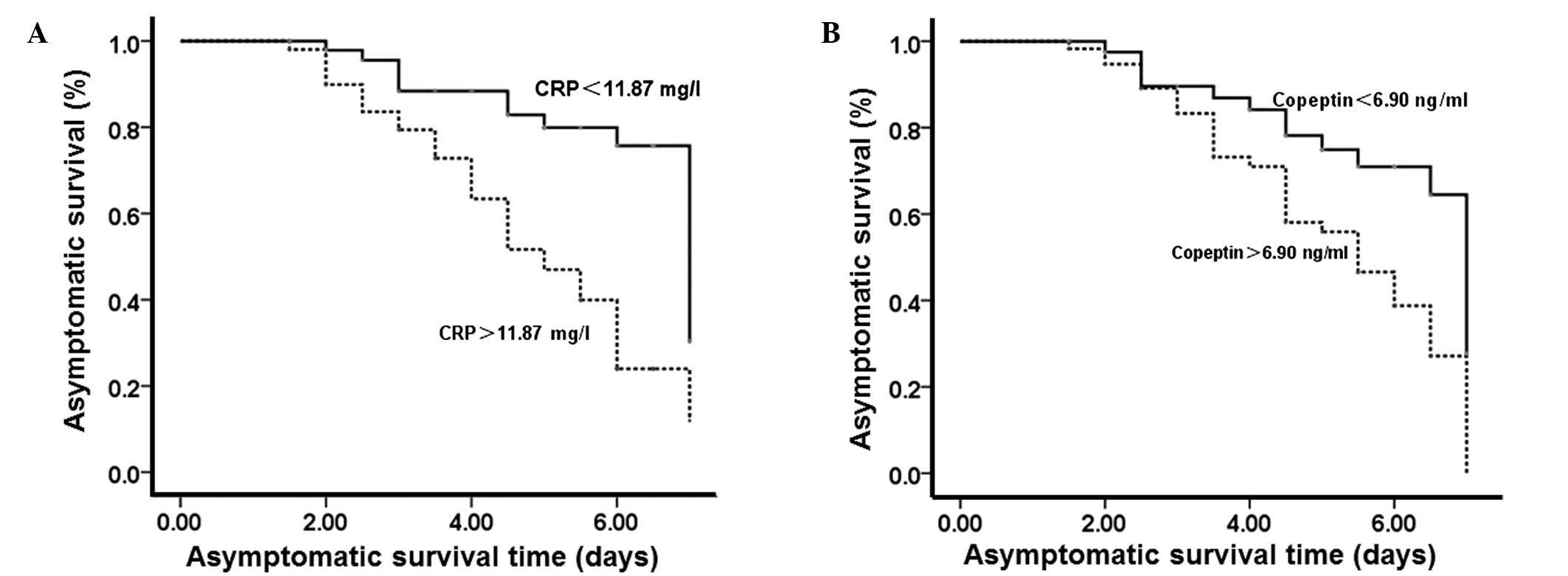Severity and prognosis of acute organophosphorus pesticide poisoning are indicated by C-reactive protein and copeptin levels and APACHE II score
- Authors:
- Published online on: January 12, 2016 https://doi.org/10.3892/etm.2016.2982
- Pages: 806-810
-
Copyright: © Wu et al. This is an open access article distributed under the terms of Creative Commons Attribution License.
Metrics:
Total
Views: 0 (Spandidos Publications: | PMC Statistics:
)
Total PDF Downloads: 0 (Spandidos Publications: | PMC Statistics:
)
Abstract
The aim of the present study was to investigate the plasma levels of C‑reactive protein (CRP) and copeptin, in addition to the acute physiology and chronic health evaluation II (APACHE II) scores, in patients with acute organophosphorus pesticide poisoning (AOPP). A total of 100 patients with AOPP were included and divided into mild, moderate and severe groups according to AOPP diagnosis and classification standards. Blood samples were collected from all patients on days 1, 3 and 7 following AOPP. The concentrations of CRP and copeptin in the plasma were determined using enzyme‑linked immunosorbent assay. All AOPP patients underwent APACHE II scoring and the diagnostic value of these scores was analyzed using receiver operating characteristic curves (ROCs). On days 1, 3 and 7 after AOPP, the levels of CRP and copeptin were increased in correlation with the increase in AOPP severity, and were significantly higher compared with the control groups. Furthermore, elevated CRP and copeptin plasma levels were detected in patients with severe AOPP on day 7, whereas these levels were reduced in patients with mild or moderate AOPP. APACHE II scores, blood lactate level, acetylcholine esterase level, twitch disappearance time, reactivating agent dose and inability to raise the head were the high‑risk factors that affected the prognosis of AOPP. Patients with plasma CRP and copeptin levels higher than median values had worse prognoses. The areas under curve for ROCs were 0.89, 0.75 and 0.72 for CRP levels, copeptin levels and APACHE II scores, respectively. In addition, the plasma contents of CRP and copeptin are increased according to the severity of AOPP. Therefore, the results of the present study suggest that CRP and copeptin levels and APACHE II scores may be used for the determination of AOPP severity and the prediction of AOPP prognosis.












